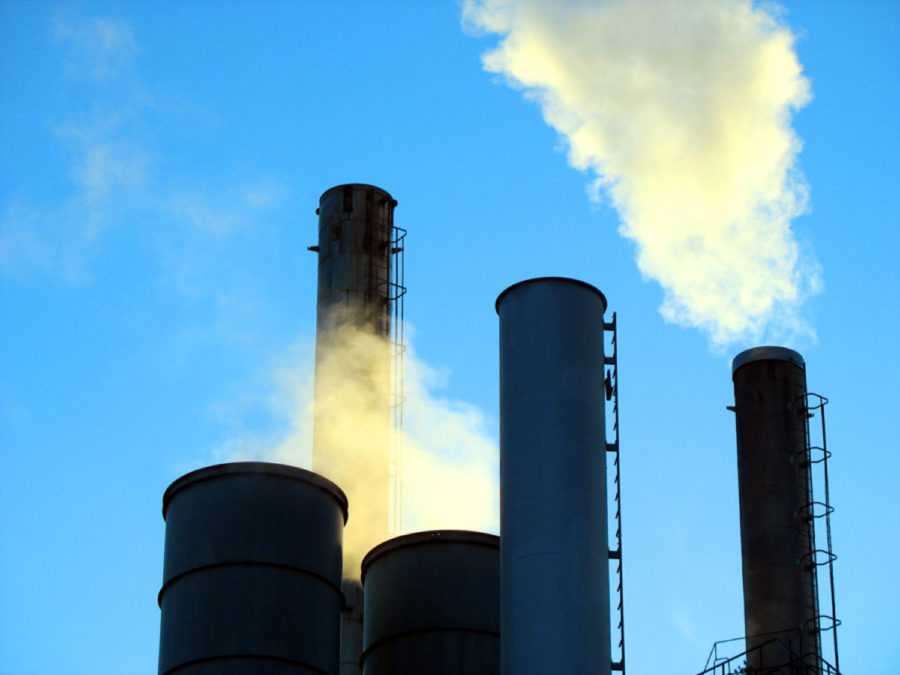Editorial: Air quality concerns require stronger action
A Code Orange air quality alert appeared on many smartphones and weather apps on Saturday.
February 7, 2019
While the rise in temperatures this past weekend from last week’s cold snap was cause for celebration for those in the Pittsburgh area, many smartphones warned us of a potentially dangerous side to the good weather.
Code Orange air quality alerts like the one sent out on Saturday mean that people with heart and lung diseases, children and the elderly may be affected by the worsened air quality. The Pennsylvania Department of Environmental Protection issued another Code Orange action day Monday, and had issued several more on top of that in January.
This weekend’s air quality concerns were a product of the major shift in temperatures. A warm air mass sitting above a cold air mass creates what’s called an inversion, which traps the cold air underneath the warm air. Unhealthy air quality results from pollutants becoming trapped in the cold air.
The number of air quality alerts issued lately is cause for great concern. It feels as if we’re sliding backwards with our air quality, and this is something we absolutely can’t allow to happen.
The Mellon Institute of Industrial Research stands as a constant reminder of just how bad Pittsburgh once let its air pollution get. Over two decades, starting in the 1940s, newer, cleaner industries moved into the area and the surfaces of buildings were cleaned but one side of the Mellon Institute’s 62 columns was left untouched. The blackened limestone acts as a reminder of Pittsburgh’s dirty history with air quality.
That history continues to this day. Last year, a Dec. 24 fire at North America’s largest coke plant, U.S. Steel’s Clairton Coke Works, damaged gas dispatch stations so that amounts of sulfur dioxide past the federal standards were released into the air. There have been nine more instances of sulfur dioxide exceedance in the Mon Valley since the fire, including one this Monday at U.S. Steel’s Edgar Thomson Steel Mill in Braddock.
Allegheny County Health Department officials said Wednesday that enforcement action against U.S. Steel could happen in one to three months and would include fines and conditions on permits on top of existing quarterly enforcement actions. But Jim Kelly, the deputy director for environmental health, said the company has had trouble complying with mitigation strategies.
“I had to personally tell U.S. Steel that they needed to start working with the community,” he said.
The recent problems with sulfur emissions beg the question of how further enforcement actions can truly stop exceedances, and how to deal with the possibility of more air quality warnings in the future caused by changes in weather patterns. Inversions are common in cold-weather climates like Pittsburgh, and a 2016 Utah Climate Center study says they may get “three times worse” in valley areas.
Democratic lawmakers from the Mon Valley, health department officials, U.S. Steel representatives, union leaders and health advocates are holding a hearing today to discuss the situation, although state Sen. Jim Brewster of McKeesport doesn’t think the meeting will generate any legislation to solve the air quality problem.
“I think it’s procedure, you gotta have agreements between U.S. Steel, the Allegheny County Health Department, local elected officials, state elected officials, the Allegheny County emergency management director,” he said Wednesday. “Those are the things we hope to leave with tomorrow, that those things get fixed.”
But if more regulations are all they come up with to fix things, it’s likely we can expect more of the same. More drastic pressure from local officials is needed in order to combat the cycle of excess emissions and inversions.








